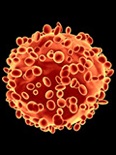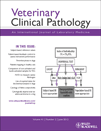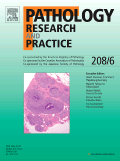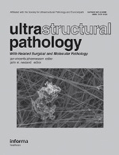
Annual Review of Pathology-Mechanisms of Disease
Scope & Guideline
Charting New Territories in Pathophysiological Insights
Introduction
Aims and Scopes
- Mechanisms of Disease Pathogenesis:
The journal focuses on elucidating the underlying mechanisms of various diseases, including cancer, infectious diseases, and genetic disorders, providing insights into how these mechanisms contribute to disease progression and potential therapeutic targets. - Translational Research:
A significant emphasis is placed on bridging basic research with clinical applications, facilitating the translation of laboratory findings into clinical practice to improve diagnosis, treatment, and prevention strategies. - Innovations in Diagnostic Techniques:
The journal explores advancements in diagnostic methodologies, including imaging techniques, biomarker discovery, and molecular profiling, which enhance the accuracy and efficiency of disease detection. - Interdisciplinary Approaches:
The publication encourages interdisciplinary research that integrates pathology with fields such as immunology, genetics, and bioinformatics, promoting a holistic understanding of disease mechanisms. - Emerging Therapeutics:
The journal highlights novel therapeutic strategies, including precision medicine and targeted therapies, which are informed by a deeper understanding of disease biology, to improve patient outcomes.
Trending and Emerging
- Artificial Intelligence in Pathology:
Recent publications have increasingly focused on the application of artificial intelligence and machine learning techniques in pathology, particularly for improving diagnostic accuracy and personalizing treatment strategies. - Role of the Microenvironment in Disease:
There is a growing interest in understanding how the tumor microenvironment and other tissue microenvironments influence disease progression, particularly in cancer and inflammatory diseases. - Epigenetics and Disease Mechanisms:
Research on epigenetic modifications and their roles in disease pathogenesis is gaining traction, reflecting the recognition of epigenetics as a crucial factor in gene expression regulation and disease development. - Neuroinflammation and Neurodegeneration:
The interplay between neuroinflammation and neurodegenerative diseases, particularly in the context of conditions like Alzheimer's and Parkinson's disease, has emerged as a significant area of focus, highlighting the importance of inflammation in neurological health. - Metabolic Pathways in Disease:
An increasing number of studies are examining the links between metabolic dysregulation and various diseases, including cancer and chronic inflammatory conditions, emphasizing the role of metabolism in pathophysiology.
Declining or Waning
- Classic Pathological Techniques:
There has been a noticeable decrease in publications focusing on traditional pathological methods such as histopathology and microscopy, as newer techniques and technologies have emerged to provide more detailed insights into disease mechanisms. - General Disease Overviews:
Papers that provide broad, non-specific overviews of diseases without a focus on specific mechanisms or advancements are becoming less common, indicating a shift towards more specialized and detailed analyses. - Non-Molecular Approaches:
Research that emphasizes non-molecular aspects of disease, such as purely clinical observations or epidemiological studies without a focus on underlying mechanisms, appears to be declining in favor of more molecularly-driven investigations.
Similar Journals

VETERINARY CLINICAL PATHOLOGY
Enhancing understanding, improving lives in veterinary medicine.Veterinary Clinical Pathology, published by Wiley, stands as a crucial resource within the realm of veterinary science, particularly focusing on the intricate field of clinical pathology. Established in 1977, this journal has been at the forefront of advancing knowledge and research, with a converged publication timeline stretching to 2024. With an ISSN of 0275-6382 and an e-ISSN of 1939-165X, it is recognized for its rigorous contributions to the field, achieving a commendable Scopus rank of #87 in General Veterinary, placing it in the 55th percentile among its peers. While it operates under a subscription model, its impact is underscored by its Q2 ranking in the Veterinary category and Q3 in the broader Medicine category for 2023. As a platform for researchers, professionals, and students alike, Veterinary Clinical Pathology aims to disseminate significant findings, foster interdisciplinary collaboration, and enhance the understanding of pathophysiological processes in animals, ultimately contributing to better clinical outcomes and animal health management.

BMC Molecular and Cell Biology
Championing high-quality insights in molecular and cell biology.BMC Molecular and Cell Biology is a forward-thinking open-access journal published by BMC, specializing in the vital fields of molecular biology and cell biology. Since its inception in 2019, the journal has carved a niche for itself, ranking in the Q3 quartile in both Cell Biology and Molecular Biology categories as of 2023. With an ISSN of N/A and an E-ISSN of 2661-8850, the journal provides a platform for groundbreaking research, high-quality reviews, and innovative methodologies. Situated in the United Kingdom, BMC Molecular and Cell Biology promotes a diverse range of studies, addressing fundamental questions in biology that resonate with both experts and new researchers alike. The journal's commitment to open access ensures that valuable findings are readily available to the global scientific community, fostering collaboration and knowledge-sharing across disciplines. Researchers aiming to contribute to the field of cell and molecular biology will find this journal an indispensable resource for both publishing and staying informed on the latest advances.

JOURNAL OF PLANT PATHOLOGY
Exploring Innovations in PhytopathologyJOURNAL OF PLANT PATHOLOGY, published by SPRINGER, is a premier academic journal dedicated to advancing the understanding of phytopathology and related fields. With a strong international presence and an impact factor that reflects its influence in the scientific community, this journal offers essential insights to researchers, professionals, and students engaged in plant health. Since its inception in 1997, it has consistently provided a platform for innovative research, contributing to the Q2 rank in Plant Science as per the 2023 category quartiles. The journal covers a broad spectrum of topics related to plant diseases, their management, and the ecological impacts they pose, ensuring relevance to contemporary challenges in agriculture and sustainability. While the journal does not currently offer Open Access options, it remains a crucial resource for those looking to deepen their knowledge and bolster their research endeavors in the vital area of plant pathology.

INTERNATIONAL JOURNAL OF EXPERIMENTAL PATHOLOGY
Exploring the Frontiers of Pathological ResearchINTERNATIONAL JOURNAL OF EXPERIMENTAL PATHOLOGY, published by Wiley, is a leading peer-reviewed journal dedicated to the field of experimental pathology. With an ISSN of 0959-9673 and E-ISSN 1365-2613, the journal has been a vital resource for researchers and professionals since its inception in 1990, covering a broad spectrum of topics within pathology, cell biology, and molecular biology. The journal's relevancy is underscored by its Q2 ranking in Pathology and Forensic Medicine and Q3 rankings in both Cell Biology and Molecular Biology, as of 2023, reflecting its significant contribution to the scientific community. Although it does not currently offer open access options, readers can benefit from its insightful research articles and reviews that guide advancements in diagnostic pathology and therapeutic strategies. As the journal continues to evolve, it remains committed to facilitating the exchange of innovative ideas and findings that drive progress in experimental pathology and related fields, making it an indispensable platform for scientists, clinicians, and students alike.

Human Gene
Connecting Discoveries in Genetics and Clinical ApplicationsHuman Gene is an innovative open access journal published by ELSEVIER, dedicated to the ever-evolving field of genetics. Established in 2022, this journal serves as a vital resource for researchers, professionals, and students alike, aiming to facilitate the dissemination of groundbreaking research and advancements in both basic and clinical genetics. With an ISSN of 2773-0441, Human Gene focuses on providing a platform for high-quality studies that investigate genetic mechanisms, their implications in health and disease, and novel therapeutic strategies. The journal currently holds a Q4 ranking in both Genetics and Clinical Genetics categories, reflecting its emerging status within the scientific community, and strives to enhance its impact to better serve an engaged audience. With its base in Amsterdam, Netherlands, Human Gene is committed to making research accessible through its open access model, inviting contributions that advance our understanding of human genetics and foster collaboration across disciplines.

CARDIOVASCULAR PATHOLOGY
Advancing insights in cardiovascular health.CARDIOVASCULAR PATHOLOGY, published by Elsevier Science Inc, is a distinguished journal dedicated to the dissemination of high-quality research in the fields of cardiology, pathology, and cardiovascular medicine. With an ISSN of 1054-8807 and an E-ISSN of 1879-1336, this journal has established itself as a vital resource for researchers, clinicians, and students alike. It is positioned in the Q2 quartile for both cardiology and pathology, indicating its significant impact and relevance in these disciplines. The journal offers a platform for innovative studies, reviews, and clinical insights, aiming to enhance our understanding of cardiovascular conditions and their pathological underpinnings. With an H-index that showcases its scholarly influence, CARDIOVASCULAR PATHOLOGY is committed to advancing the field through rigorous peer review and open dialogue among professionals. The journal is accessible through institutional subscriptions, making it an essential reference point for ongoing research through its convergence of knowledge from 1992 through 2024.

PATHOLOGY RESEARCH AND PRACTICE
Unveiling Disease Mechanisms Through Rigorous ResearchPATHOLOGY RESEARCH AND PRACTICE is a premier journal in the field of pathology and forensic medicine, published by Elsevier GmbH in Germany. With a rich publication history since 1978 and an impressive convergence period extending to 2024, this journal serves as a vital resource for researchers and professionals dedicated to advancing the understanding of pathological processes. It holds notable rankings, including Q3 in Cell Biology and Q2 in Pathology and Forensic Medicine for 2023, reflecting its significance in the academic community. The journal aims to publish innovative research findings, reviews, and case studies, facilitating a deeper understanding of disease mechanisms and improving diagnostic practices. Authors and readers alike benefit from its reputable platform, noted for its challenging and rigorous peer-review process. By fostering a collaborative environment and providing open access options, PATHOLOGY RESEARCH AND PRACTICE continues to contribute meaningfully to the discourse within its respective fields, thereby appealing to a diverse audience of researchers, professionals, and students.

Malaysian Journal of Pathology
Connecting researchers and clinicians through impactful insights.Malaysian Journal of Pathology, published by the MALAYSIAN JOURNAL PATHOLOGY, stands as a pivotal resource in the fields of pathology and medicine, contributing rich insights since its inception in 1979. This peer-reviewed journal, based in Malaysia, is dedicated to disseminating original research, review articles, and case studies that advance the understanding of disease mechanisms and diagnostics. With a current impact factor reflecting its ranked positioning—Q4 in Cell Biology, Q4 in Histology, and Q3 in both Miscellaneous Medicine and Pathology & Forensic Medicine—this journal serves as an essential platform for researchers, clinicians, and students alike. Although it operates without open access, its scholarly rigor and contributions are well recognized, holding ranks such as #84 in Pathology and Forensic Medicine according to Scopus. The Malaysian Journal of Pathology is committed to fostering innovation and excellence in medical research, making it an invaluable tool for professionals seeking to stay abreast of significant advancements in the pathology domain.

ULTRASTRUCTURAL PATHOLOGY
Pioneering Research in Forensic and Experimental PathologyULTRASTRUCTURAL PATHOLOGY is a prestigious academic journal published by Taylor & Francis Inc, focusing on the intricate and detailed aspects of pathology as well as forensic medicine since its inception in 1980. With an ISSN of 0191-3123 and an E-ISSN of 1521-0758, this journal provides a vital platform for researchers and professionals to disseminate innovative findings pertinent to both clinical and experimental pathology. Despite not being an open-access journal, its contributions are critical within its categories, positioned at the Q3 quartile in Pathology and Forensic Medicine and Q4 in Structural Biology as of 2023. The journal's reputation is further underscored by its Scopus rankings, placing it in the 41st percentile for Pathology and 15th percentile for Structural Biology, indicating a competitive standing in these fields. ULTRASTRUCTURAL PATHOLOGY aims to foster rigorous scholarly discourse and advance knowledge through the publication of original research articles, reviews, and case studies, making it an essential resource for academics, practitioners, and students engaged in the evolving domains of pathology and structural biology.

MedComm is a distinguished Open Access journal published by Wiley, located in the United States. Since its inception in 2020, it has rapidly established itself as a leading platform for cutting-edge research in the fields of Biochemistry, Cell Biology, Drug Discovery, Genetics, Immunology and Allergy, and Oncology, achieving a prestigious Q1 category ranking across multiple disciplines in 2023. MedComm is committed to providing a rigorous and transparent peer-review process, ensuring the publication of high-quality articles that advance the frontiers of medical science. With its remarkable Scopus ranking, the journal serves as an invaluable resource for researchers, professionals, and students looking to stay abreast of important developments in the life sciences. The open access model facilitates widespread dissemination of scholarly work, fostering collaboration and innovation within the global scientific community. Researchers interested in submitting their work or exploring the latest findings are encouraged to engage with this pivotal journal during the converged years from 2020 to 2024.